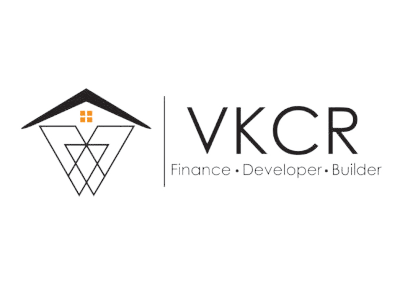You can change this to run on other branches as well, or set up a different action for dev/feature branches. Submitting the test results to Testmo as part of our GitHub Actions workflow is very easy. First, instead of using our npm run mocha script alias, we are changing our call to use the mocha-junit script. Instead of outputting the results to the console, Mocha will write the test results to a file using the JUnit XML file format then.
We have tested the code on Ubuntu 16.04, 18.04, and 20.04 machines. Some features of the Autoware Architecture Proposal require CUDA; therefore, we are skeptical that it will be possible to use OSX or Windows machines, even with Docker. We do not provide any support for non-Ubuntu operating systems. This repository has been archived by the owner on Jun 20, 2021.
Master ChatGPT by learning prompt engineering.
If a language is provided, it will check at the Github gitignore site if the language exists or not. If the status is 200 then it will create a .gitignore file. Now, we have successfully defined and checked our test cases by manually running them in vscode. In the next section, we will look into how these test cases can be integrated with GitHub under a workflow with GitHub Actions. We are open-source believers, we use open source software and components to build solutions, and we want to give back to the community, sharing our expertise and being more open and transparent.

The first time I saw a CI/CD pipeline in action was a real wake-up moment. I was working at a company that used GitHub Actions to cut its release times down to five minutes. And if any issues cropped up, you could roll back a release with the touch of a button. With our ability to create new custom workflows, that’s not a lot we can’t automate.
How to use the project
This way you can easily try new packages, install dependencies or re-use containers without having to install anything directly on your machine. There are a couple of configuration options inside this workflow https://www.globalcloudteam.com/glossary/automated-testware/ file that are common to most GitHub Actions workflows. We start by naming the workflow so it’s easier to see the name in GitHub’s web app. We then tell GitHub when to run this workflow with the on option.

This creates the package.json and package-lock.json files in our project directory with our dependencies . When we check out the code of our repository on another machine or in GitHub Actions, we can easily install all packages based on these configuration files. Just in case the above workflows aren’t enough to keep you busy, I wanted to give you a few more. Every one of these workflows has been built and tested by the GitHub team—and they’re updated regularly too. Once you open this tab up for the first time, you’ll find a quick description of what GitHub Actions is and some suggested workflows for your repository.
GitHub-Repository-Export-List
A test automation library based on common other best practice open source libraries. It adds missing functionalities but does not reinvent the wheel. Just glues stuff together nicely and adds some sprinkles. Here are 359 public repositories matching this topic… I couldn’t seem to find any sample payloads, so here’s an example of a sample github context payload you would expect in the event.
The jobs group together all the jobs that run in the workflow file. Except, it’s not really a useful build—where are the build artifacts? By default, this action just builds the repo, and doesn’t make any output items available. Then, you can patch it up as needed, and commit it again. Committing changes to build.ymlcounts as a commit to master, so it will trigger the action again.
Issues: ERNI-Academy/net6-automation-testware
For Docker containers you usually want to use smaller and more targeted images. Sometimes it’s easier to learn by watching someone else do something in real-time. So, if you’re trying to build your own GitHub Actions workflow, watch this video to learn how to build your own action in less than 10 minutes. In this situation, you can either create a new workflow or customize a pre-built workflow.

We can prevent pull requests from being merged by setting up a Protected Branch in our project settings. Github Actions starting pageOnce there, we’ll immediately see some starter workflows that Github provides for us to dive in with. Since we’re using a node project, we can go ahead and click Set up this workflow under the Node.js workflow. Continuous Deployment takes this a step further and takes this automation to the deployment level. Where with the CI process, you automate the testing and the building, Continuous Deployment will automate deploying the project to an environment.
Step 3: Testing that our tests fail and prevent merges
In our case we tell GitHub to run this workflow whenever we push new code to the repository. The workflow_dispatch event also allows us to easily trigger this workflow via GitHub’s UI or API if we want use this in the future. Running your automated tests as part of your GitHub Actions CI workflow is a great way to automatically test new versions of your code as updates get pushed to your repository. This helps to constantly make sure everyone’s code is working properly together and is well-tested.
- This can be helpful to catch commits that cause the build to fail.
- You probably don’t want to deploy failed builds either, so running testing beforehand in all cases can be beneficial.
- When you add a language like gitstart -l python, it will search for a gitignore file on the Github official site.
- Navigate to your GitHub repository and you will be able to see the Actions tab as shown below.
- This will create a directory and a GitHub repo called my-repo.
Github even has a marketplace where you can browse around for one. If you’d like to include additional details like the variables I used for the pull request, you can make use of Github’s available contexts. This lets you pull information about the environment and the job to customize your message. We won’t go into tweaking that here, as what we already have will send a basic pull request message, but you can test out and build your own payload with Slack’s Block Kit Builder.
Awesome package manager
So we just add the call to npm install to our test.yml workflow. In the second part, we’ll set up a workflow that sends a message to slack with a link to a pull request whenever a new one is created. This can be super helpful when working on open source projects with a team and you need a way to keep track of requests. The first will be to simply run some automated tests https://www.globalcloudteam.com/ that will prevent a pull request from being merged if it is failing. We won’t walk through building the tests, but we’ll walk through running tests that already exist. Writing unit test cases for typical web development projects is normal but generally, in the case of data exploration or quality checks, there is a tendency to skip and do it manually at the end.

